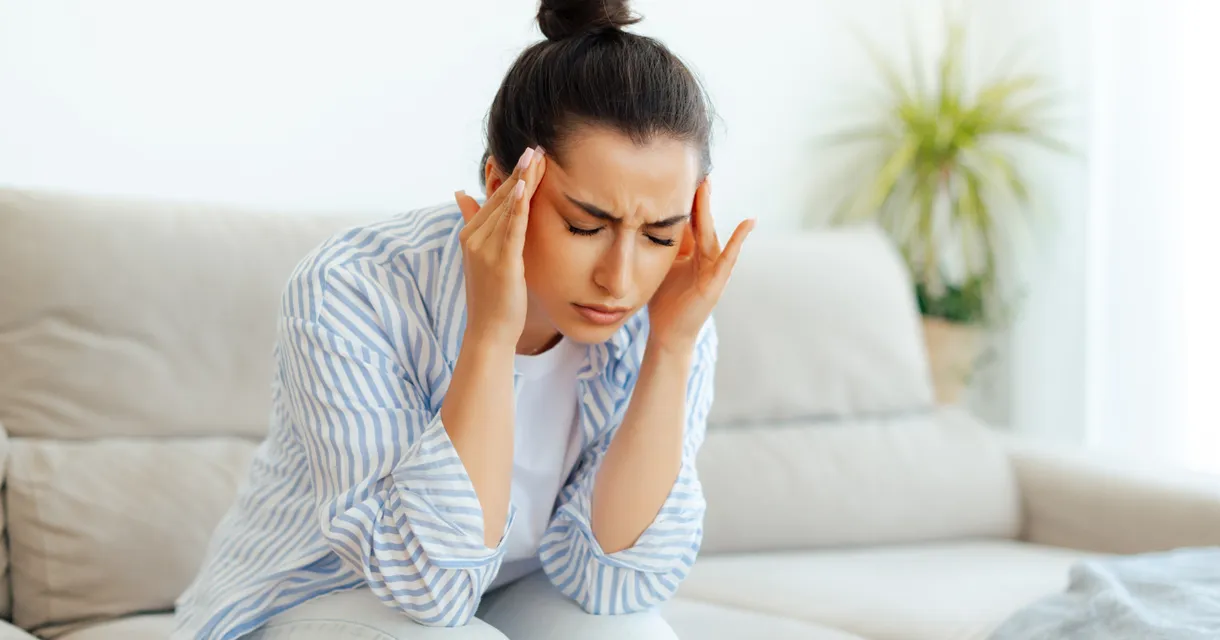From staying hydrated and applying cold compresses to using over-the-counter pain relief, there are many safe ways to manage headache symptoms. Headaches are one of the most common health complaints, affecting people of all ages. They can disrupt work, sleep, and daily activities, but in most cases they can be eased with simple remedies.This guide explains the main types of headache and how to relieve them quickly and effectively.
Types of Headache and How to Get Rid of Them
Not all headaches are the same — and the right treatment often depends on the cause. The National Institute for Health and Care Excellence (NICE) highlights the importance of distinguishing between different types of primary headaches, such as tension-type headaches, migraines, and cluster headaches, as well as secondary headaches that may be linked to sinus problems or other conditions. Understanding the differences can help you find the most suitable relief.
| Headache Type | Symptoms | Natural Relief | Treatment Options |
|---|---|---|---|
| Tension Headache | Feels like a tight band around the head, often linked to stress, posture, or muscle tension. | Rest, hydration, relaxation techniques, gentle neck stretches, heat pack on shoulders. | Paracetamol, Ibuprofen. |
| Migraine | Throbbing head pain, often on one side; may include nausea, sensitivity to light and sound, visual disturbances. | Rest in a dark room, cold compress to forehead, regular sleep, avoiding known triggers. | Migraine relief tablets (ibuprofen/aspirin with caffeine), Sumatriptan (for diagnosed migraine). |
| Sinus Headache | Pressure around eyes, cheeks, and forehead; nasal congestion; worsens when bending forward. | Steam inhalation, saline sprays, warm compress over sinuses. | Decongestants, Ibuprofen for pain relief. |
| Cluster Headache | Severe, piercing pain around one eye, occurring in cyclical patterns or ‘clusters’. May cause eye redness, tearing, nasal congestion. | Maintaining a regular sleep schedule, avoiding alcohol during cluster periods. | Requires medical treatment. Your GP may prescribe triptans (injection or nasal spray) or oxygen therapy. Over-the-counter medicines are not usually effective. |
Tension Headaches
Tension headache symptoms: often described as a dull, tight pressure around the forehead or back of the head. They are the most common headache type and are usually stress-related.
How to Get Rid of a Tension Headache
Try relaxation methods such as meditation or stretching, ensure good hydration, and use over-the-counter pain relief like paracetamol or ibuprofen if needed.
Migraines
Symptoms of a migraine: throbbing pain, usually one-sided, with possible nausea, vomiting, and light or sound sensitivity. Attacks may last from hours to days.
How to Treat a Migraine
Managing triggers (such as lack of sleep or certain foods) can help. During an attack, resting in a quiet, dark environment may ease symptoms. Medicines such as migraine relief tablets or triptans (if prescribed) may also be used.
Sinus Headaches
Sinus headache symptoms: pain and pressure around the face, often linked to sinus infection or congestion.
How to Get Rid of a Sinus Headache Instantly
Steam inhalation, nasal rinses, and warm compresses can provide natural relief. Decongestants or pain relievers may also help reduce discomfort.
Cluster Headaches
Cluster headache symptoms: sudden, extremely painful headaches around one eye, occurring repeatedly over weeks or months.
How to Get Rid of a Cluster Headache
Cluster headaches usually require specialist care. Your GP may prescribe triptans or oxygen therapy. Over-the-counter medicines like paracetamol or ibuprofen are not effective for this type.
What is the Difference Between a Migraine and a Cluster Headache?
Migraines are typically moderate to severe, throbbing, and last for hours to days, often with nausea and light sensitivity. Cluster headaches are shorter but far more intense, usually focused around one eye and occurring in cycles. Both may require different treatments — migraine relief is often available over the counter, while cluster headaches usually need prescription therapy.
